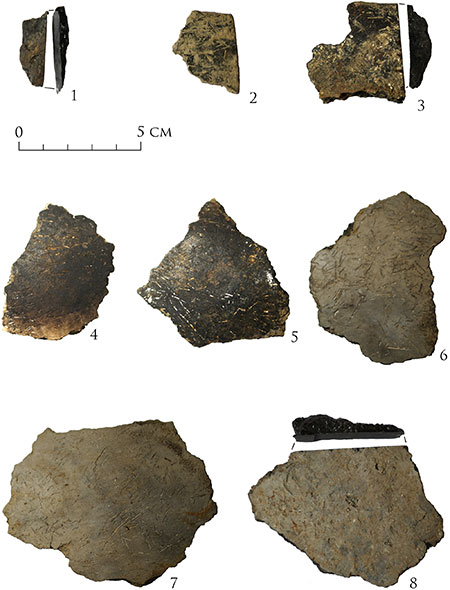New hunter-gatherer made pottery found in Slovakia
An international team of Archaeologists lead by Masaryk University, Czechia, have discovered a previously unrecorded pottery style dating to before the arrival of farming.

York Archaeologist, Dr Penny Bickle, in collaboration with Masaryk University and researchers from Poland and Sweden, have published their analysis of a new pottery style found at the site of Santovka, Slovakia. Through a combination of different forms of analysis and novel radiocarbon dating methods, they have shown that the pottery was made before the arrival of farming in the region. You can read about their findings in the journal Radiocarbon.
In many parts of Europe, farming marks the point at which pottery is first used. However, hunter-gatherers in Siberia and Northern Europe, used and made pots, likely adopting the technology from East Asia. The discovery and dating of the pottery sherds from Santovka, now shows that hunter-gatherers were using ceramic technology north of the Danube several centuries before farming arrived.
Santovka, located about 120km east of Brastislava, came to light along the bank of a stream, not far from a series of hot springs which were visited from the Upper Palaeolithic onwards. During excavations, between 2012 and 2014, a previously unidentified pottery, tempered with grass, came to light.
The project, Tracing the Neolithic transition through the first pottery, was awarded to the team by the Czech Science Foundation, to analyse and date the pottery. Two methods were used and confirm that the ceramic style dates to the first half of the 6th Millennium cal BC. Alongside dating the fats which were absorbed into the pot walls from cooking activities, the team also used a new acid washing technique to extract the grass temper and any contaminants.
Dr Penny Bickle, from the University of York's Department of Archaeology, said: "These results were really exciting. It demonstrates that the spread of pottery technology, and interactions between hunter-gatherers and farmers were more complex in the Carpathian basin than we previous thought."
Further analysis on the technical features of the pottery, established that it was light weight and well adapted to a hunter-gatherer lifestyle. This suggests that although pottery might be associated with farmers in this region of Europe, at Santovka, ceramic technology had been innovated with by hunter-gatherers and adapted to their needs.